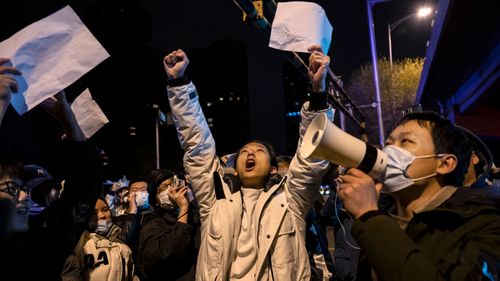State media reported remarks on Thursday by Liang Wannian, head of the National Health Commission’s expert panel on COVID-19 control, who said China had successfully withstood the impact of the epidemic and its population had achieved herd immunity.
But he also cautioned that the epidemic was not completely over.


Liang’s comments echoed a statement last week from the ruling Communist Party of China that said the nation had achieved a “decisive victory” in COVID-19 epidemic control.
The swift rollback of stringent disease controls under the government “Covid-zero” policy sparked a surge in cases that saw hospitals overwhelmed and people scrambling for basic medicines. But the outbreak appears to have subsided in intensity in recent weeks.
Top officials said that China had kept the lowest COVID-19 fatality rate in the world – a metric that China’s top leadership touted throughout the pandemic, as its lockdowns, enforced quarantines and border restrictions kept case numbers – and fatalities – low compared with some other major economies.
But independent experts say deep questions remain about the impact of the outbreak on the country.

Since ending “zero-Covid”, China has officially recorded more than 80,000 fatalities – a figure that counts people who were tested for COVID-19 and died in hospital but excludes deaths that went untested or those who died at home during the surge of the virus.
Read Related Also: Silvio Berlusconi diagnosed with leukaemia, his doctor confirms
Those excluded could be a sizable group, experts say, as testing stalled and many patients were likely to have avoided hospitals.
“There are still many questions about the death toll in China due to Covid – it might be useful if they could release more information, particularly about the all-cause deaths compared to the pre-Covid years,” said virologist Jin Dongyan, a professor at the University of Hong Kong’s School of Biomedical Sciences, pointing to one method for assessing a more complete picture of fatalities in the country.
China has also been criticised by the World Health Organization for its limited data transparency during the outbreak, including its earlier and more narrow definition of a COVID-19 death, which Chinese health officials updated in January.

It’s also not clear how many people were infected overall since China relaxed the “zero-Covid” policy – raising further questions about how authorities calculated the undisclosed coronavirus fatality rate, which experts say is typically measured by dividing the number of deaths over the total number of cases.
Meanwhile, there have been seven cases of the XBB.1.5 Omicron subvariant reported in China since January 8, state media reports.
The new variant is highly transmissible and has become the dominant strain in some Western nations.

Where Australia ranks in countries with the greatest health freedoms






